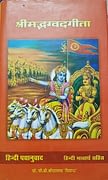Shri Jagat Singh Bisht
(Master Teacher: Happiness & Well-Being, Laughter Yoga Master Trainer, Author, Blogger, Educator, and Speaker.)
☆ Meditate Like The Buddha # 11: Developing Wisdom ☆
Lesson 9
The purpose of meditation extends beyond concentration. Its ultimate aim is to:
- See things as they truly are.
- Develop wisdom.
- Let go of defilements.
- End suffering.
- Embrace renunciation.
Meditation cultivates wisdom, and wisdom diminishes without consistent practice. Therefore, heedfulness is essential. One must meditate regularly to sustain this inner growth.
Contemplations of Wisdom
By now, you are well-practised in observing your breath, feelings, and mind. Begin your session by meditating for 20 to 30 minutes, focusing on these elements. Then, transition to contemplations of wisdom.
Observing Impermanence
As you breathe in and out, reflect on the impermanence of physical and mental phenomena:
- Breathe in, focusing on impermanence. Breathe out, focusing on impermanence.
- Ever mindful, breathe in; mindful, breathe out.
The five aggregates of clinging are:
- Form
- Feeling
- Perception
- Volitional activities
- Consciousness
Understand that each of these is impermanent. What is impermanent is inherently tied to suffering. Therefore, do not cling to these phenomena.
Realising the Nature of Existence
- All conditioned phenomena are impermanent.
- All conditioned phenomena are suffering.
- All conditioned phenomena are non-self.
- Nothing is worth clinging to.
- Directly know all things as they are.
Fading Away of Formations
As you breathe, contemplate the fading away of mental and physical formations:
- Breathe in, focusing on fading away. Breathe out, focusing on fading away.
- Ever mindful, breathe in; mindful, breathe out.
Specifically, reflect on the fading away of the following:
- Craving: Breathing in, focus on its fading; breathing out, let it fade away.
- Aversion: Breathing in, focus on its fading; breathing out, let it fade away.
- Ignorance: Breathing in, focus on its fading; breathing out, let it fade away.
- Ever mindful, breathe in; mindful, breathe out. Fully aware, ardent, and mindful.
Concluding the Session
With a relaxed body and mind, conclude your meditation by cultivating loving kindness:
- May all beings be happy, be peaceful, be liberated.
When you are ready, gently open your eyes and emerge from meditation, carrying the insights and peace of your practice into your daily life.
♥ ♥ ♥ ♥
Please click on the following links to read previously published posts “Meditate Like The Buddha: A Step-By-Step Guide” 👉
☆ Meditate Like The Buddha #1: A Step-By-Step Guide ☆ Mr. Jagat Singh Bisht ☆
☆ Meditate Like The Buddha #2: The First Step ☆ Mr. Jagat Singh Bisht ☆
☆ Meditate Like The Buddha #3: Watch Your Breath ☆ Mr. Jagat Singh Bisht ☆
☆ Meditate Like The Buddha #4: Relax Your Body ☆ Mr. Jagat Singh Bisht ☆
☆ Meditate Like The Buddha #5: Cultivate Loving kindness ☆ Mr. Jagat Singh Bisht ☆
☆ Meditate Like The Buddha # 6: Experience your feelings ☆ Mr. Jagat Singh Bisht ☆
☆ Meditate Like The Buddha # 7: Tranquilize Mental Formations☆ Mr. Jagat Singh Bisht ☆
English Literature – Articles ☆ Meditate Like The Buddha # 8: Midway Recap ☆ Mr. Jagat Singh Bisht ☆
© Jagat Singh Bisht
Laughter Yoga Master Trainer
FounderLifeSkills
A Pathway to Authentic Happiness, Well-Being & A Fulfilling Life! We teach skills to lead a healthy, happy and meaningful life.
The Science of Happiness (Positive Psychology), Meditation, Yoga, Spirituality and Laughter Yoga. We conduct talks, seminars, workshops, retreats and training.
≈ Editor – Shri Hemant Bawankar/Editor (English) – Captain Pravin Raghuvanshi, NM















